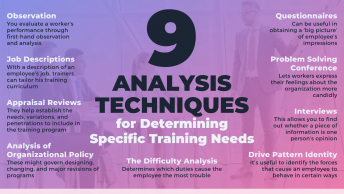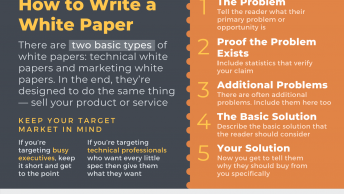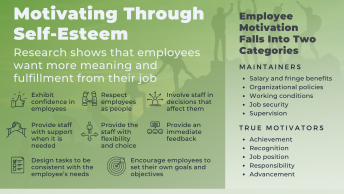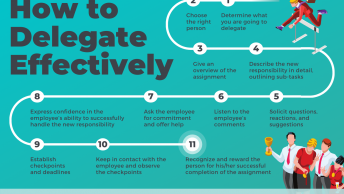Coaching is one of the most critical skills to be mastered by supervisors and manager. Why is coaching so important ? because today’s environment has created more pressure to do more with less. The key to reducing pressure is to make the most of your most valuable resource: people.
The objective of this article is to help managers, supervisors, or co-workers coach employees to overcome barriers or hurdles and improve performance. If you have a sincere desire to develop and support your subordinates and the self-discipline to practice specific strategies, this module offers you creative coaching techniques to use in creating an inspiring working culture.
Coaching takes time, and it involves commitment, patience, persistence and a keen desire to actively participate in employees’ development. Throughout the coaching process, it is important to keep in mind that the main objective is to improve performance. Managers or supervisors should not jump to early conclusions when they identify a specific performance problem. As with any problem-solving process, the first and often the most difficult step is to identify clearly what exactly, precisely and concisely the problem is.
Why should Managers / Supervisors Know about Coaching?
Why should you improve your coaching skills? Check the following statements and compare your views with the author :
• Coaching is the most effective way of developing your employees
• It makes your job easier when your subordinates build their skills levels
• Improves productivity when employees know what the departmental goals are and how to achieve them
• High performing employees will help you reduce the anxiety and stress of increasing and multiple responsibilities.
• Avoids suprises and defensiveness in performance appraisals.
• Employees develop a high level of self-esteem and job satisfaction.
• Positive recognition and feedback increases staff motivation and initiative
• Coaches in an organisation, as in sports, are great influencers. They know how to bring out the best and the most in others. They also know that it is an on-going process and a primary responsibility.
• Coaching builds your reputation as a people developer; develops sharing of leadership responsibilities and increases team cohesiveness due to clarifies objectives
What is Coaching?
Coaching is an on-going process designed to help the employee gain greater competence and overcome barriers to improving performance.
Mariane Minor, faculty member at the General Electric Management Institute, New York, has defined coaching as a directive process by a manager to train and orient an employee to the realities of workplace, and to help the employee remove barriers to optimum work performance.
Coaching differs from training, which is a structured process to provide employees with the knowledge, skills and working attitudes to perform a job professionally. It is appropriate when the person has the ability and knowledge but performance has dropped, and he has not met the expectations. Coaching involves a change in behavior. The idea is to move the employee from where he is to where you want him to be.
Coaching is not the same as counseling. Counseling is problem solving directed at personal issues that are affecting or have the potential to affect performance. Very often counseling involves personal problems such as marital and family problems, emotional and psychological barriers. A manager or supervisor should not try to counsel, but should serve as a resource person, directing the employee to a skilled practitioner for further professional help.
Counseling, on the other hand, is a supportive process by a manager to help an employee define and work thru personal problems that affect job performance.
Coaching and counseling share many of the same skills, but differ from each other in certain aspects. The following diagram will help you differentiate the two processes :
Coaching Behaviours
In addition to above qualities, characteristics and skills, as an effective coach you need to demonstrate certain behaviours. Using the acronym COACH, we will review the following behaviours. Try to relate each one to yourself and your own situation.
• Collaborate. The coaching relationship is a collaborative one. You need to work with the employee to identify the performance problem, set standards and performance objectives, and develop a performance improvement plan. It becomes a matter of how can WE solve the problem.
• Own. You need to examine your own personal behaviour and accept some ownership for the problem along with the employee. Ask yourself: ” Did I make my expectations clear ?” “Did I provide the proper training?” ” Does the employee have the appropriate tools to do the job ?”
• Acknowledge. You need to acknowledge successes through reinforcement and also acknowledge an employee’s problems, feelings, and concerns. Acknowledging problems and concerns is not the same as overlooking them or allowing them excuse behaviour that is not at an acceptable level. For example, you can certainly understand an employee’s difficulty in juggling the multiple responsibilities of both home and work. However, the resulting chronic absenteeism or tardiness cannot be allowed to continue.
• Communicate. This is probably the most important behavior and the one most managers seem to find the most difficult. As we noted in the above lists, communication skills including listening, questioning, giving and receiving feedback are critical for success. You need to practice two-way communication on a daily basis. In particular, you need to clarify your expectations.
• Help. As a manager / supervisor, you are not only a coach but also an advisor, serving as a resource person and a guide to other resources, both inside and outside the organization. In addition to giving help, you should also be seeking help from your employees. For example, if you need to increase production, ask you employees to help you develop a plan or at least solicit their ideas. You will be surprised how creative and innovative people can be if you give them a chance.
The Coaching Process
Anyone can learn to be a coach. By applying the following step-by-step process, you will improve the performance of individual team members and get the results you want.
• Step One: Problem Identification. The co1 ach describes the current undesirable performance-related behaviour that is observable, measurable, non-judgmental and can be changed. Telling someone he has a ‘ bad attitude ’ is not descriptive; it is judgmental. Try to eliminate the word ‘attitude’ from your thought process when dealing with employee performance. A simple example is the employee who is frequently late. In describing this unacceptable behaviour to the employee, you cite specific documented dates and time periods that you have observed. Be careful not to rely on hearsay.
Using the employee you identified earlier as a case example, describe the current behaviour including the situation and the employee’s actions. Remember to be as specific as possible and focus on behaviour not attitude.
• Step Two: Employee Response. Give the employee an opportunity to explain or question. Use open-ended questions such as ‘ What do you think is the problem ?’ ‘ What is keeping you from getting to work on time ?’ In the tardiness case, the employee may give the standard excuses or may reveal a real problem preventing him from being punctual.
Make a list of open-ended questions you could ask the employee in order to uncover any underlying problems. Brainstorm some possible reasons the employee may give you. Of course, when you really deal with this individual, be aware that you may hear things you had not anticipated and keep your mind open to other possibilities.
• Step Three: State Expectations. As a coach you need to state clearly what you expect of the employee. For example, the manager of the tardy employee restates that he expects the employee to be at his work place and ready to work by 7:30 am. The use of empathy is very important at this stage. You might begin by saying: ‘I understand that it must be difficult for you to manage all your responsibilities; however, the fact remains that you are expected to be here on time and you have not been doing so.’
Again, for the sake of this exercise, state very specifically what you expect the employee to do or not to do. Include an empathy statement.
• Step Four: Get Agreement. At this step the employee may try various ways to escape the issue and accept no responsibility for his behaviour, but your careful documentation will be invaluable here. Through two-way communication, you and the employee should agree on the problem and the impact it has on the organization and others. If the employee is frequently late, that action places additional burden on others because it may also create resentment that affects the entire office environment.
With your case employee, identify the impact of that person’s behaviour on others or on your operation.
• Step Five: Improvement Plan. This step is critical. You and your employee must collaborate to identify clearly the desired behaviour. It will be very easy to tell the employee what he should do. The two of you should establish goals that are specific, realistic, attainable, simple, and time-bound as well as strategies for overcoming barriers to reach those goals. Once again, use good questioning techniques to get the employee to state what he plans to do to solve the problem.
To the tardy employee you might ask: ‘ What do you think you can do to make sure you get here on time ?’ In this manner, you are placing the onus on the employee and making him or her take appropriate ownership. By the same token, you will want to ask what you can do to help. It may be that what the employee wants you to do may not be appropriate or possible. If that is the case, it is a good starting point for further discussion and may be even some negotiation. The employee may offer a solution you had not considered.
What are some open-ended questions you could use with your case employee?
• Step Six: Gain Commitment. In this step, the employee commits to changing behaviour or improving performance by stating exactly what he is going to do to improve the situation. The tardy employee who has difficulty in getting to work on time may need to get organized the night before and/or get up earlier. Once you gain agreement and commitment from the employee, ask the employee to summarize the discussion.
How would you determine if the employee has indeed made a real commitment to improving performance?
• Step Seven: Set a Time for the Next Meeting. Before concluding the coaching session, you and the employee will need to agree on a time to meet to discuss progress. The next meeting should give ample time for the individual to practice the new behavior, yet not so long that he/she assumes the matter is forgotten.
With your case example, how long do you think you should wait before the next meeting?
• Step Eight: Monitor and Follow-up. It is important to monitor the employee’s specific feedback in the form of comments, instructions and suggestions. For example, the manager/supervisor reinforces the behaviour of the formerly tardy employee by saying, ” Ahmed, I’ve noticed that you’ve been to work on time every day, and I really appreciate the extra effort to make that happen.” Another example of reinforcing positive behaviour may be, ” Ahmed, you handled that project very well. Although you couldn’t meet the deadline, you gave the management a choice and allowed them to make their own decision.” Immediate praise is a powerful reinforcer. If you want the behaviour repeated, you need to let the person know.
Using your case example, write down some ways you could monitor the employee’s progress. Remember, however, you are doing this in isolation. In the actual situation, the employee would help determine the appropriate plan of action.
Using Feedback
The importance of feedback in the coaching process cannot be stressed enough. Keep in mind the following guidelines for effective feedback :
• Be descriptive rather than evaluative. Describe observable behavior not judgments on your part. Be careful not to put the employee on the defensive.
• Be specific rather than general. Describe the behavior in the context of the actual situation.
• Discuss only behaviors the employee can change. Some people have shortcomings over which they have no control.
• Be timely and do it frequently. Hold the discussion at the earliest opportunity after the behavior has occurred.
• Take into account both the employee’s needs and the organization’s needs. Remember to look for a win-win situation.
• Communicate clearly. Check for clarity by asking the employee to state his understanding of the discussion.
• Do it when the receiver is ready to receive it. Keep in mind that timing is everything.
Recognising and Rewarding Positive Behaviour
Feedback and reinforcement need to be followed with recognition and rewards. Individual recognition teamed with incentive programs can be very effective but should be tied to organizational goals and individual performance and valued by the employee. If, for example, your organization is committed to responding quickly to customers, then you should reward the employee’s efficiency in returning phone calls or resolving complaints. That reward could be public praise, special privileges, choices of flex time, schedules, vacations, or tangibles such as gifts, money, plaques, theater tickets. The reward should depend on the person receiving it. The employee with young children may appreciate given more scheduling flexibility whereas someone on a limited income would value the opportunity to work overtime.
Measuring Success
One of the ways you can measure your coaching success is to solicit feedback from your employees on how you are doing. One easy and relatively risk-free method is to ask each employee to complete a brief “agree-disagree” questionnaire – anonymously, of course. Your questions (or statements in this case) could include but need not be limited to the following:
Another approach would be for you to respond to the list according to how you see yourself, give the same list to your employees, then compare your self-perception with the perception of others. It could be a real eye-opener. Regardless of the outcome, you now have valuable data that reinforces the positive approach you are already using or identifying areas for improvement.













